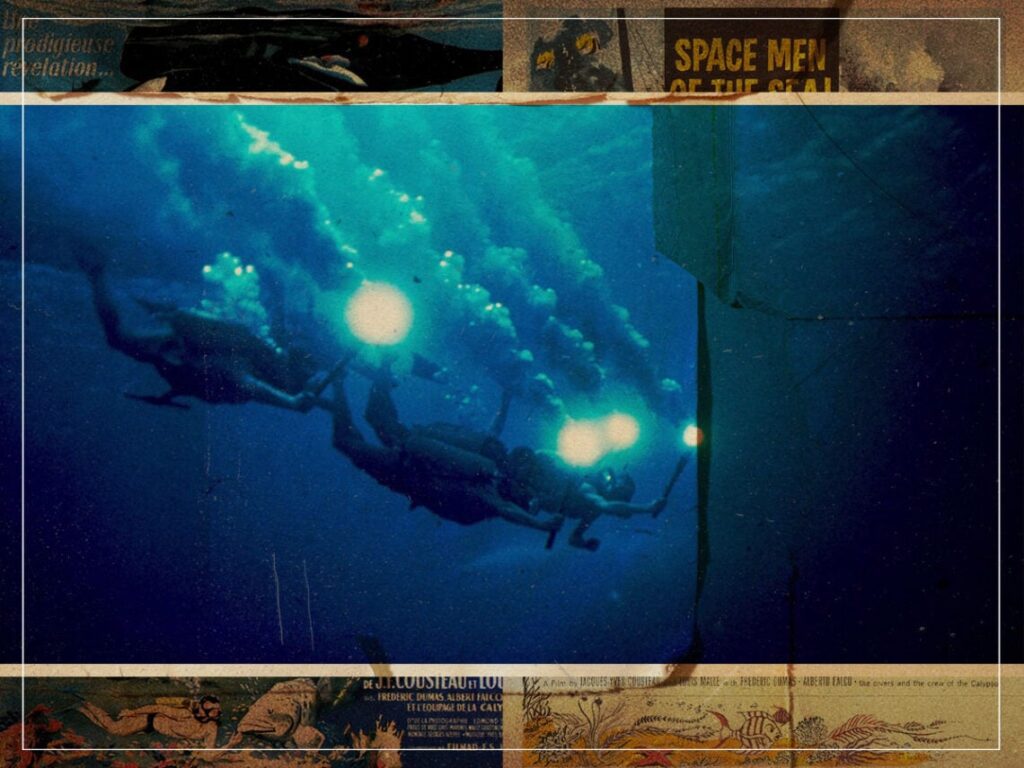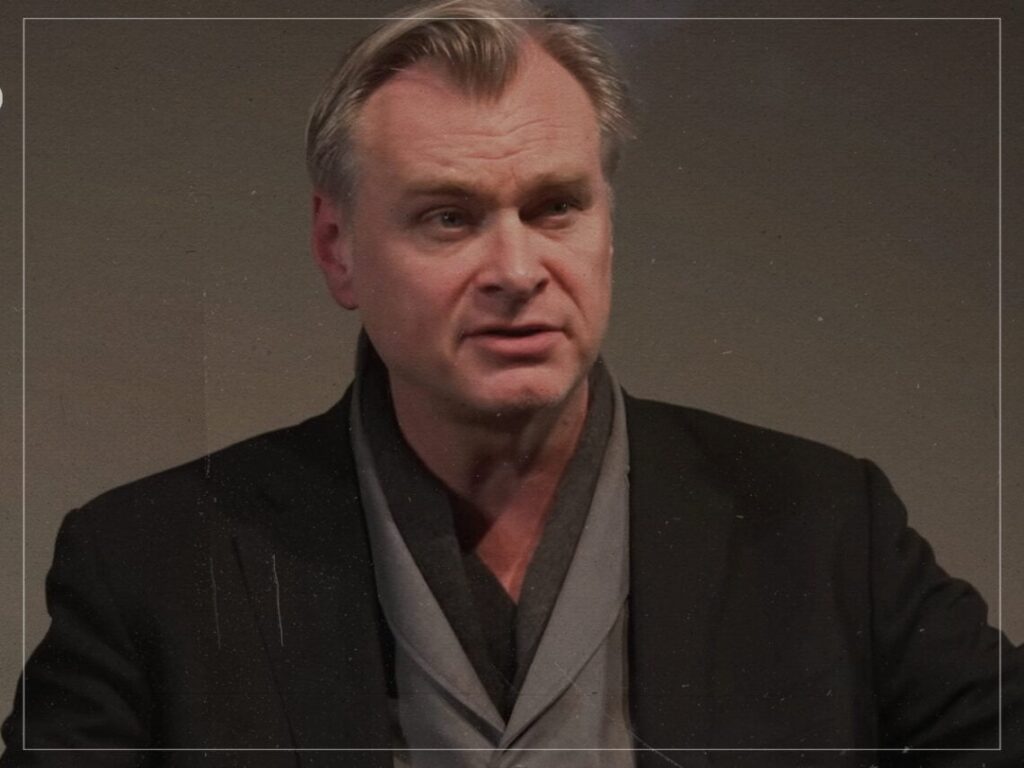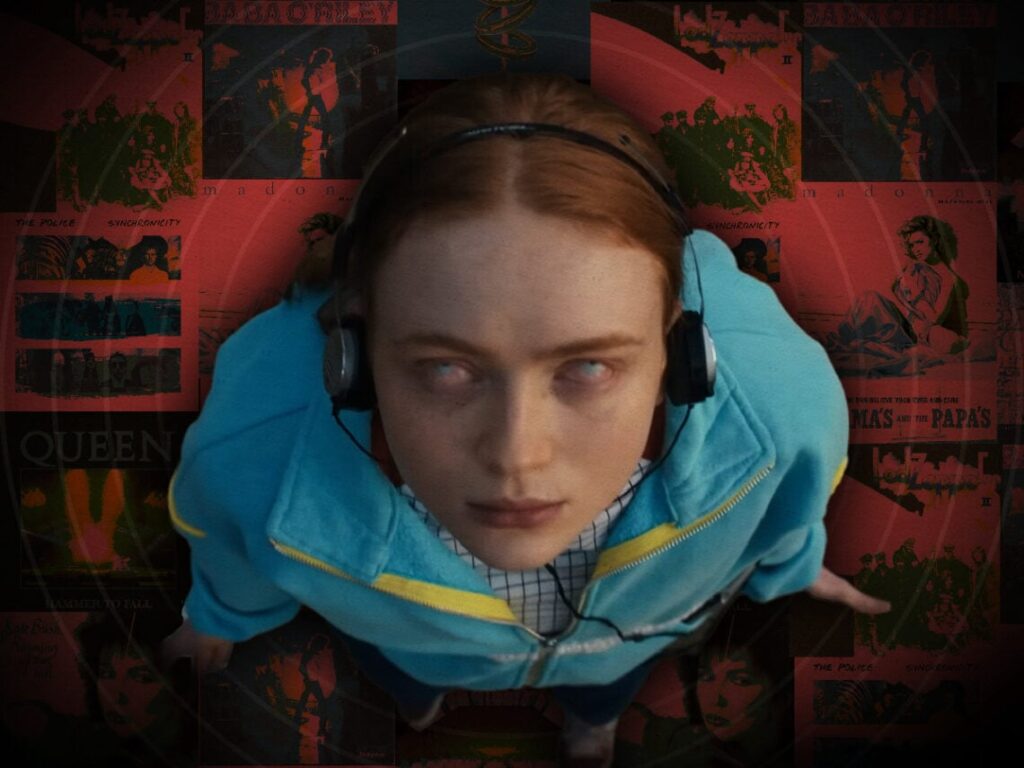The pioneering underwater documentary efforts of Jacques Cousteau
 Posted On
Posted On
(Credits: Far Out / MUBI / Rank))
Whether in documentary or fictional films, throughout the cinematic medium, there have been countless brilliant explorations and moments captured underwater. Whether in Steven Spielberg’s Jaws, James Cameron’s The Abyss, or any number of David Attenborough-narrated nature documentaries, the world that lies beneath the waves has thankfully been shown through the lens.
However, none of that aquatic brilliance might have been possible without the pioneering efforts of the legendary French naval officer, oceanographer, and filmmaker Jacques Cousteau. After all, Cousteau invented the first successful underwater breathing apparatus, which helped him make some of the world’s first underwater documentaries.
From an early age, Cousteau was interested in water and the sea. After initially training as a naval officer, he helped design the first SCUBA equipment with Emile Gagnan. Suddenly, diving underwater for extended periods was possible, and the limitations of previous equipment were eradicated, allowing humans to finally live beyond their physical means and explore the watery depths.
Cousteau had always longed to explore the depths of the ocean. In 1943, with the help of a small crew, he used his Aqua-Lung equipment to make a short documentary called Shipwrecks, which marked the beginning of a long journey into the wonders of the sea. The film was relatively simple in its final product, but it showed that an underwater documentary was a realistic possibility.
In 1953, Cousteau wrote about his underwater explorations in the book The Silent World: A Story of Undersea Discovery and Adventure, which arrived in documentary form three years later and was directed by Louis Malle. Gone was the rudimentary quality of Shipwrecks, and a stunning piece of cinema was revealed, one that won the Palme d’Or at the Cannes Film Festival and the Academy Award for ‘Best Documentary’.
As a newfound household name, Cousteau was able to keep exploring more of the ocean. He began filming several documentaries on his ship, the Calypso, which was equipped with pressure-resistant cameras. In the 1960s, Cousteau arrived in the world’s living room in the television series The Undersea World of Jacques Cousteau, with each episode exploring a different part of the marine world.
James Cameron once said that he first became interested in oceanography, which eventually led him to make Titanicand The Abyss because of Cousteau’s later work. “Jacques Cousteau burst onto the television scene with his specials [in the 1960s],” he once told the BBC.
Adding: “That was such a fantasy world to me that I really felt somehow called to learn to scuba dive and to want to do that type of exploration for myself.”
Cousteau’s films were not merely for entertainment purposes, though. They were educational and told of the dangers that the ocean’s ecosystem faced. The devastating effects of human activity were frequently shown in his films, and Cousteau largely served as one of the first advocates for environmental efforts in the sea, especially as the 20th century began to threaten to come to an end.
It was because of Cousteau that underwater documentary filming became possible, and by making his equipment available, he was able to change the way that we think about the ocean and the planet at large. Marine conversation, stunning aquatic stories, and even Titanic can all be traced back to Cousteau, who might just be the most important naval officer of all time.
[embedded content]
Related Topics


